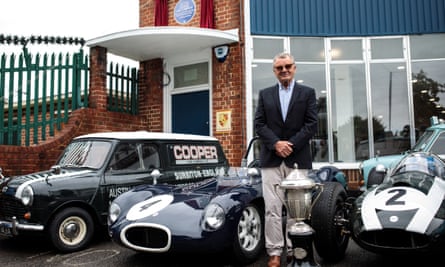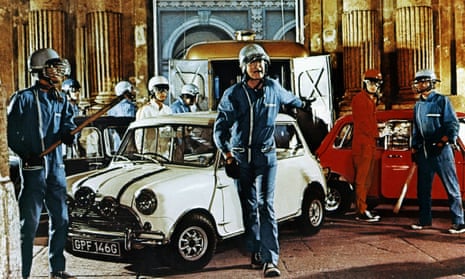A small factory in Surbiton which produced and helped develop some of the most important cars in British motoring history has been honoured with an English Heritage blue plaque.
A ceremony held on Thursday at the former works of the Cooper Car Company (CCC) was attended by family members, dignitaries and fans, some in their vintage Coopers.
While the structure is not much to look at today, English Heritage historian Howard Spencer said that it is “a hugely important building to the history of the British car industry”.
The company’s most famous car, the Mini-Cooper, was in the 1960s a favourite of cool cats such as George Harrison and Mick Jagger and obtained superstar status as a symbol of British popular culture when three of them were driven as the getaway cars in The Italian Job in 1969.

Before that, CCC was known for racing cars which revolutionised grand prix racing. Jack Brabham drove Coopers to Formula One championship wins in 1959 and 1960.
The Mini-Cooper was a collaboration between the Cooper Car Company and the mass market British Motor Corporation (BMC). They were made at large BMC factories but it was Surbiton which prototyped the early rally driving Mini-Coopers in the late 1950s.
The company in Hollyfield Road, Surbiton, was established by Charles Cooper, a notoriously brusque man, and his son John Cooper in 1947. The first cars, essentially four-wheeled motorcycles, dominated Formula Three in the early 50s.
Mike Cooper, John’s son, said the family was proud of the new blue plaque.
“At its heart it was very much a family firm,” he said. “I remember my dad telling me the story of how during a really cold spell the mechanics at the works asked my granddad if the workshop could have central heating.
“My granddad, with my father, promptly went downstairs to the workshop and, with two lengths of tubing, picked up the coke burning stove which was placed along one wall and placed it in the centre of the workshop, my granddad saying: ‘There you go, central heating!’”
Historian Spencer said the workforce at Surbiton was small, never exceeding 35, but the company was a “beacon of innovative motor design”.
He added: “It’s a testament to the continuing resonance of its legacy that we have so many vintage Coopers and their owners here today to show their support.”
